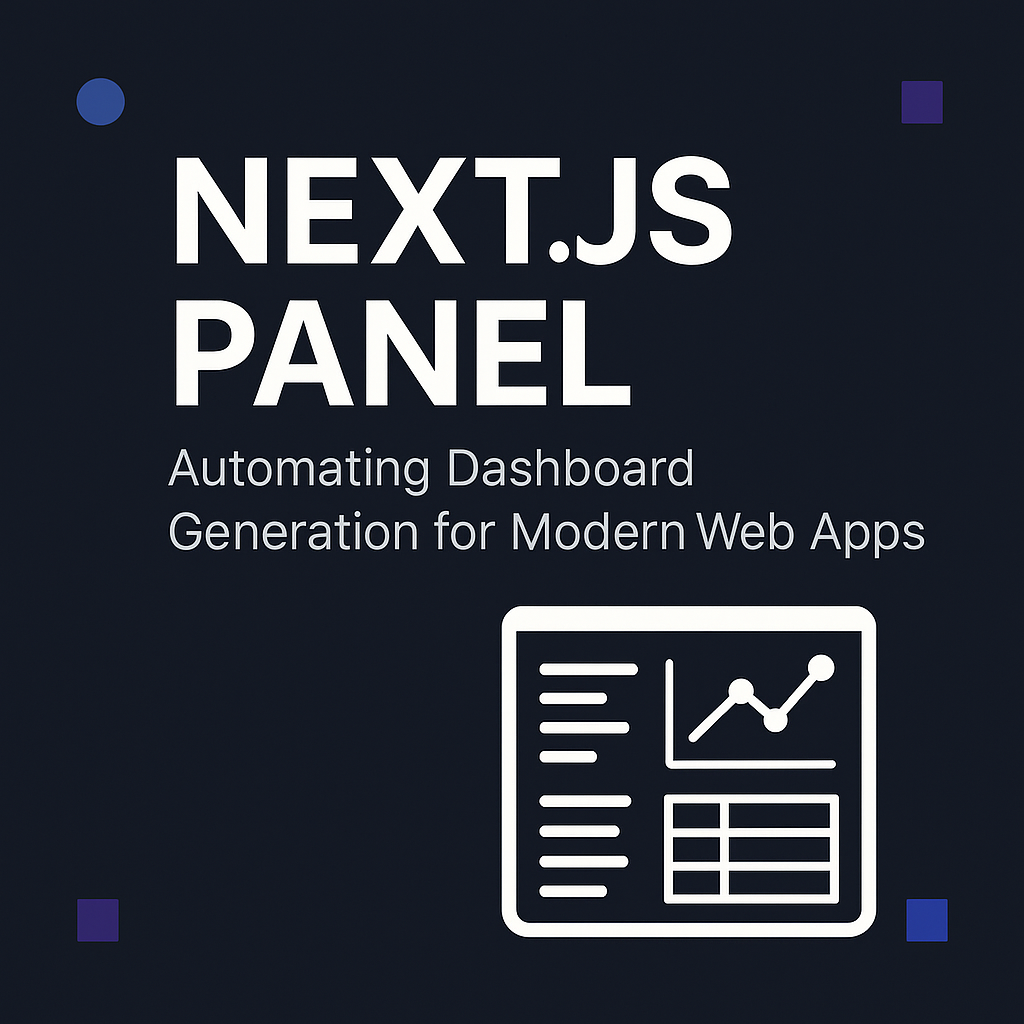Introduction
Creating dashboards and admin panels often involves repetitive tasks — setting up API routes, defining database models, building forms, and designing tables. These common requirements, while essential, can slow down development and lead to bloated codebases.
Next.js Panel addresses this challenge by offering a command-line tool that auto-generates all the boilerplate needed for managing data-driven dashboards. Built on top of Next.js (App Router), Prisma, and Tailwind CSS, it significantly speeds up the development process.

What Is Next.js Panel?
Next.js Panel is an open-source NPM package that helps developers scaffold full-stack admin panels with minimal setup. It uses resource-driven schema files to generate:
- RESTful API routes
- UI forms for creating and editing records
- Dynamic tables for displaying records
- Backend models using Prisma ORM
- Preconfigured layouts using Tailwind CSS
This makes it ideal for rapidly building admin panels, internal tools, CMS-like systems, and MVPs.
Key Features
- 🔄 Schema-based resource generation
Developers define resource classes that describe fields, types, and UI behavior. - ⚙️ Automatic API & UI creation
The tool sets up corresponding API routes and user interfaces for CRUD operations. - 🧱 Prisma ORM integration
Works directly with Prisma models, allowing full control over database schemas. - 🎨 Customizable UI components
Forms and tables are built using Tailwind CSS, with support for easy overrides. - 📁 File structure automation
Generated components are cleanly organized and injected automatically into route handlers and UI layouts.
How It Works
Once installed, the developer runs a few CLI commands to bootstrap the project and generate new resources.
Example Workflow
bashCopyEditnpm i nextjs-panel
npx nextjs-panel setup
npx prisma init
After setting up the database schema via prisma/schema.prisma:
bashCopyEditnpx prisma db pull # or db push
npx prisma generate
To generate a new resource (e.g., “user”):
bashCopyEditnpx nextjs-panel generate user
This single command generates:
- A React form for adding/editing users
- A data table for displaying users
- API endpoints for CRUD operations
- Route and file structure registration
Developers can then customize the resource file (e.g., UserResource.ts) to adjust fields, labels, validation, and UI elements.
Who Is It For?
- Full-stack developers who frequently build dashboards or back-office tools
- Freelancers creating admin panels for clients
- Startups building MVPs with user/admin management
- Agencies aiming to speed up delivery without sacrificing quality
- Open-source contributors looking to improve developer tooling
Use Cases
- Admin panels for SaaS platforms
- CRM tools
- CMS-like backends
- Inventory management systems
- Educational portals with user roles
Advantages
- 🕒 Saves hours of repetitive setup
- 🧩 Modular and extensible design
- 🧠 Encourages clean architecture
- 🚀 Works out-of-the-box with Next.js App Router
- 👨💻 Open-source and community-driven
Future Roadmap
- 🔐 Authentication and role-based access control
- 🌍 i18n and localization support
- 🖼️ Image and file upload support
- 📊 Chart and analytics component integration
- 🎨 UI theme customization
Conclusion
Next.js Panel is a practical solution for developers who want to accelerate dashboard development without compromising structure or quality. With its CLI-powered automation, schema-driven design, and integration with Next.js and Prisma, it provides a solid foundation for modern web apps.
The project is open to contributions and continues to evolve based on community feedback.
